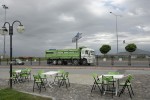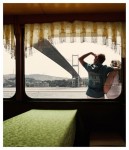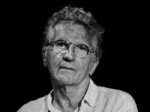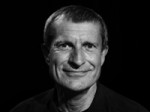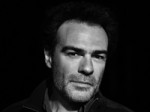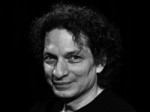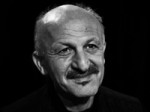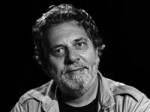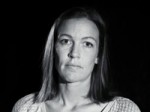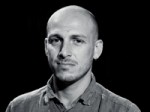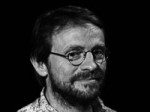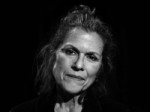Time in Turkey

About the project
by photo editor Selahattin Sevi (Zaman Daily)
A photograph is the eye and the heart of a newspaper. The Zaman daily is crowning its 25-year journey with a project that is the most comprehensive work of photography ever launched in Turkey. Within the project, titled “Türkiye’de Zaman”/Time in Turkey, our newspaper invited 25 world renowned photographers to tell stories in photos that reflect life and issues unique to Turkey from their particular points of view. These masters of photography, who have recorded sorrow, joy and the hope of people in their own style and language in various places and hotspots of the world, under sometimes difficult conditions, and whose works are published in internationally prestigious publications, came together for the big “photo of Turkey” for Zaman. The photographers travelled throughout Anatolia, the cradle of many civilizations.
Experienced professionals and journalists from Steve McCurry to Paolo Pellegrin and from Eric Bouvet to Anders Petersen showed us stories from our country that we had not seen, although we had looked. While Jane Evelyn Atwood descended into a coal mine in Zonguldak, Bruno Barbey worked in places that reflected the historical background of İstanbul. Samuel Bollendorff searched the lives that changed due to “water” in the Southeast. Eric Bouvet covered night shift police officers in Istanbul. While Kathryn Cook pursued the traces of 1,000-year-old civilizations in the Ahlat district of Bitlis province, Claudine Doury chronicled young women who are textile workers. Carolyn Drake focused on football culture. Nikos Economopoulos compiled road trip stories from the East and Southeast to the depths of Anatolia. Michel Vanden Eeckhoudt was the guest of Turkish nomads living in Mersin. Rena Effendi worked in the labyrinth-like streets of Tarlabaşı, a neighborhood very close to Istiklal Street in İstanbul, while George Georgiou showed how Anatolia has changed.
Harry Gruyaert reflected the colors of İstanbul. Guillaume Herbaut spent time in the highlands of Rize to depict tea culture. Ed Kashi took photos depicting economic development in the country, while Massimo Mastrorillo looked into the new Turkey that is being rebuilt on the margins of urban transformation. Steve McCurry included the whirling dervishes in Bursa province in his portfolio. Davide Monteleone was around the Marmara Sea to capture the importance of the Bosporus and Çanakkale straits. Christopher Morris photographed President Abdullah Gül with his family and the people around him at the Tarabya presidential residence. Paolo Pellegrin took photos of the Kırkpınar oil wrestling in Edirne. Anders Petersen shot minority groups, and Reza photographed an Ashura ceremony in İstanbul. Anthony Suau focused on the concepts of wealth and prosperity, as Gaël Turine looked at the TV industry by examining the series “Valley of the Wolves.” Vanessa Winship presented portraits of children who attended the Turkish Olympiads from all over the world, while Ami Vitale portrayed the other side of Kapadokya (Cappadocia).
The guidelines of the project were determined at the beginning. The photographs were supposed to be free of an orientalist viewpoint and preconceived notions of Turkish culture, and they were not to be taken from a touristic approach. Our aim was to tell something new instead of repeating clichés. The people who could do it best were not those photographers who were merely experts in using a camera, but those who also had a different perspective in terms of their point of view, philosophy of life and educational background. We wanted them to visit Turkey based on both this background and their professional experience.
While we were selecting the topics to be studied by the photographers, we did not consider geographic classifications such as cities and regions. We determined the topics thematically. We suggested realistic topics such as economic growth in Turkey, urban transformation, urban migration, industry and the young population. We focused on the details of the values that make Turkey privileged and different. It was inevitable that the majority of the topics involved İstanbul, as İstanbul is the center of development, change and dynamism in the country as well as its problems.
This project also featured a continuous and open workshop throughout the year. Each photographer we invited was accompanied by a photojournalist from Zaman. The photojournalists found connections to the topics the photographers were interested in, and also they assisted the photographers in anything else they might require. We did not limit the workshop to Zaman as colleagues working for other media outlets as well as freelance photographers were involved in the process by attending meetings and presentations made in the context of the workshop.
The “Türkiye’de Zaman”/Time in Turkey project is an important contribution enabling photography in Turkey to achieve universal standards as well as positively impacting the development of photography as a business. The development of ethics in photography was started and continued by photographers working for newspapers, magazines and photo agencies. Today the most memorable works are still the products of press photography and documentary photography despite the advent of new photographic methods. We hope the approach to the development of photography in Turkey will be shaped in a desirable way.
Actually, we may be said to be lucky in terms of the starting point for the development of Turkish photography, as photography has always been accepted and supported in this land. Unlike the art of printing, photography arrived in Turkey at the same time as it did in other countries around the world. Upon its arrival the sultans of the time invited photographers into their private lives and their harems. They posed with their families. Sultan Abdülhamit II, the initiator of many innovations, invited European photographers and enlisted photographers within the Ottoman Empire to capture its vast reaches. He compiled a global photo archive of these pictures. This archive has played a very important role in creating our visual memory and our understanding of the entire empire. The photographs — known as the Yıldız Albums — are counted among the outstanding visual memories of the last century.
Another project that inspired our “Türkiye’de Zaman”/Time in Turkey project was “Yurt Gezileri” (Journeys In the Motherland)” in which Turkish painters were sent around Anatolia in the 1940s to depict various regions of the country. In the context of this study each painter portrayed the region he or she selected in his own style and from his particular perspective. Many renowned painters whose works we admire today had, for the first time, the opportunity to express themselves on such a broad ground thanks to that project.
With its preferences for accurate news, objective commentary, original design and effective photography, Zaman has made a special, unique and sound contribution to the development of the profession of photography. The development of press photography can be maintained by creating an environment that is healthy, creative and exiting. We believe this is the only way for photojournalism, one of the most prominent branches of journalism around the world, to reach the status it deserves in Turkey.
The distinguished photographers who participated in the project “Türkiye’de Zaman”/ Time in Turkey will continue to watch Turkey and convey their impressions to us and to the rest of the world. We are grateful to each of the photographers for taking part in this project.
Now is the time to look at Turkey from a global perspective.

 Deutsch
Deutsch





